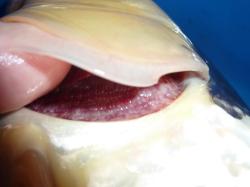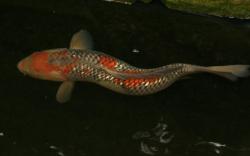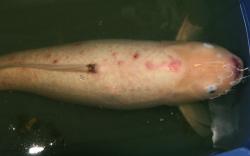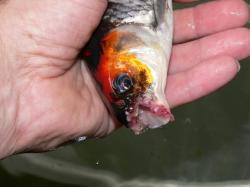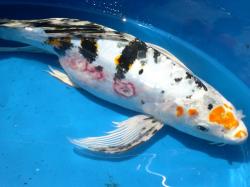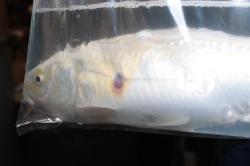- Information
- Products
- Pond Construction
- Koi Info
- Pond Info
- Portfolio
- Portfolio Introduction
- Portfolio I
- Portfolio II
- Portfolio III
- Portfolio IV
- Portfolio V
- Portfolio VI
- Portfolio VII
- Porfolio VIII
- Porfolio IX
- Portfolio X
- Porfolio XI
- Porfolio XII
- Portfolio XIII
- Porfolio XIV
- Portfolio XV
- Portfolio XVI
- Portfolio XVII
- Portfolio XVIII
- Portfolio XIX
- Portfolio XX
- Portfolio XXI
- Interest
koi health care
The goal of all good Koi Keepers should be to maintain a healthy collection of thriving Koi. Unfortunately most koi do not die from natural causes. In the long run you will not be successful with poor husbandry practices and pond design flaws
Now that there is so much information readily available on fish care, there is really no reason not to learn from other peoples experiences and not at the expense of your fish Remember, your fish are relying on you to provide for them. The old adage, "An Ounce Of Prevention is Worth a Pound of Cure" is so true in this hobby
Now that there is so much information readily available on fish care, there is really no reason not to learn from other peoples experiences and not at the expense of your fish Remember, your fish are relying on you to provide for them. The old adage, "An Ounce Of Prevention is Worth a Pound of Cure" is so true in this hobby

Threats - Parasites, Bacteria, Fungus and Viruses
Pathogens are divided into 4 categories. Parasites include microscopic single celled flagellates and ciliates to visible crustaceans like Anchor Worm. Bacterial problems like aeromonas and pseudomonas can bring down a fish quickly. Fungal issues include Saprolegnia, or "Sap" which affects dead tissue exhibiting a white tuft like appearance. Viral problems range from the harmless koi pox to the deadly KHV which will likely kill all of your fishThe most important concept is that a proper diagnoses should be obtained before administering medications. Many Meds can be deadly if overdosed and should only be used when you know your ponds volume
Treatment Options for parasites
Prazi-pond
Does not harm your filter and will kill flukes in about a weeks time. The only negative is the high costProForm-C
Broad spectrum treatment which needs to be dosed correctly. Negligible impact on the filter and very effective at eradicating protozoaProForm-LA
Kills the likes of the larger crustacean parasites like Anchor Worm and Fish Lice DebrideKoi Health Lecture from the AKCA 2009 Seminar in San Diego
Download an mp3 version to listen to on the go

